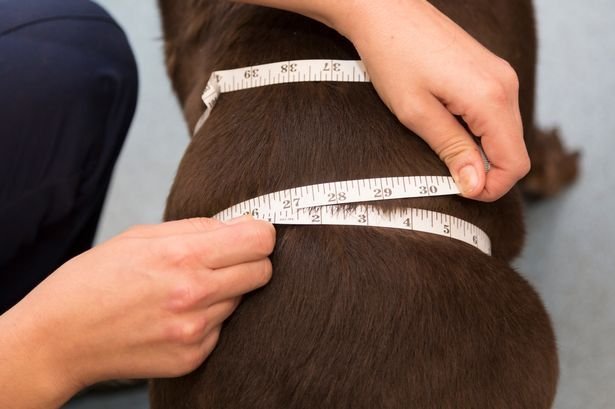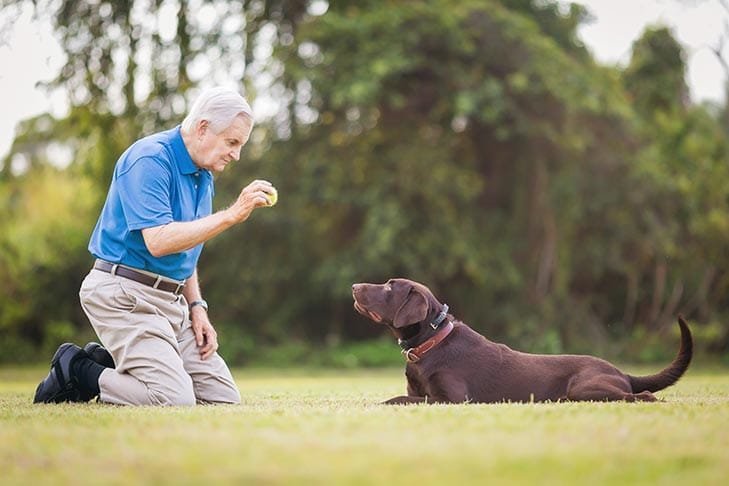- April 3, 2025
How to Measure Your Dog for the Perfect Fit : A Complete Guide for Every Pet Parent

Why Measuring Your Dog Matters
Ever brought a cute outfit for your pup only to realize it’s either too tight or way too loose? It happens to the best of us! Getting the right size for your dog’s clothes,harnesses, collars, and accessories is crucial not just for fashion, but for comfort, mobility and even safety. An ill-fitting harness can cause chafing, a collar that’s too tight can be dangerous, and a loose raincoat won’t keep them warm. Whether you have a small Chihuahua or a large Goldern Retriever, knowing how to measure your dog properly will make all the difference.
When dogs wear improperly fitted accessories, they may experience discomfort, anxiety, and even injury. A collar that is too tight can put excessive pressure on their trachea, while a harness that is too loose can lead to escapism and potential hazards. Similarly, a raincoat that drags behind a dog or booties that slip off mid-walk can render protective gear ineffective. By taking a few extra minutes to measure properly, you ensure that your dog enjoys both function and fashion without any hassle.

The Essentials Before Measuring
Before you start, make sure you have the right tools and setting:
- A soft measuring tape (like the ones tailors use)
- A notebook or phone to record the measurements
- Treats or a favorite toy to keep your pup engaged
- A flat surface so your dog can stand still
- A friend or family member to help, especially for wiggly dogs

Dogs, especially young ones, may not understand why they need to stand still while you wrap a tape around them. This is why having treats and distractions ready will help. A calm and relaxed dog will allow for a more accurate measurement, preventing errors that can lead to purchasing incorrect sizes.
Key Measurements for Dog Apparel
Dog clothing needs to fit well to be comfortable and functional. Here are the main areas you need to measure:
1. Neck Circumference
- Wrap the measuring tape around the base of your dog’s neck, where a collar would normally sit.
- Make sure it’s snug but not tight—you should be able to fit two fingers under the tape.
- This measurement is crucial for collars, sweaters, and jackets.
The neck is a sensitive area for many dogs, so taking this measurement correctly ensures that any accessory placed there won’t cause discomfort. Too tight, and it can lead to choking; too loose, and your dog might slip out of their collar or clothing.
2. Chest Girth (The Most Important Measurement!)
- Measure the widest part of your dog’s chest, just behind the front legs.
- This is the most crucial measurement for harnesses, jackets, and sweaters.
- A well-fitted harness should sit snugly but allow free movement.
Since most of your dog’s weight and movement is centered around their chest, an incorrect measurement here can cause major discomfort. A too-tight harness may restrict breathing and movement, while one that is too loose may allow your dog to slip out, creating a safety hazard.
3. Back Length
- Measure from the base of the neck (where the collar sits) to the base of the tail.
- This is essential for full-body coats, rain jackets, and onesies.
- If your dog has a curled tail, stop at the base of the tail to avoid an overly long garment.
Many pet parents make the mistake of assuming that two dogs of the same breed have identical back lengths. However, variations in genetics, weight, and posture can cause differences, which is why this step should never be skipped.
4. Leg Length
- If you’re buying pants, booties, or full-body suits, measure from the top of the leg down to the paw.
- This ensures that the clothing doesn’t interfere with movement.
Dog clothing manufacturers typically design for the average dog, but that doesn’t mean it fits every dog perfectly. Dogs with short legs, like Corgis, will need different proportions than long-legged breeds like Greyhounds. Always check this measurement when buying legged apparel.

Measuring for Collars
- A proper-fitting collar is essential for your dog’s safety. Here’s how to get the right size:
- Measure the neck circumference (as explained above).
- Add two fingers of space between the tape and the neck for comfort.
If choosing an adjustable collar, check the manufacturer’s sizing guide to see if your dog’s measurement fits within the range.
How to Measure for a Harness
Harnesses are a great alternative to collars, providing better control and reducing strain on the neck. For the best fit:
- Measure the neck girth (some harnesses require this measurement).
- Measure the chest girth, as it’s the most important.
- Check weight recommendations, as some harnesses are categorized by weight as well.





Measuring for Dog Booties
Dog shoes protect paws from hot pavement, rough terrain, and icy surfaces. To ensure the right fit:
- Place your dog’s paw on a piece of paper.
- Press down gently to mimic how their paw spreads when they walk.
- Mark the widest part of the paw.
- Measure from the tip of the nails to the back of the paw.
- Compare this with the sizing chart provided by the manufacturer.
Common Mistakes to Avoid
Even experienced pet owners can make mistakes when measuring their dogs. Here are some common ones to watch out for:
- Measuring while your dog is sitting or lying down – Always measure when they’re standing naturally.
- Pulling the tape too tight or too loose – A snug fit is best.
- Ignoring the size chart – Different brands have different sizing standards.
- Forgetting about fur thickness – A fluffy dog might need a little extra room.
- Assuming all dog breeds have the same proportions – A Greyhound and a Pug may weigh the same but have very different body shapes!

What If Your Dog Falls Between Sizes?
If your pup is in between sizes, always go for the larger size. Many items, like harnesses and coats, have adjustable straps. A slightly bigger size is easier to adjust than something too tight.
Measuring your dog properly isn’t just about looking cute—it’s about ensuring comfort, safety, and mobility. By following these simple measurement steps, you’ll be able to choose the perfect apparel, harnesses, and accessories that make your pup feel great.
So grab that measuring tape and get started—your dog will thank you with wagging tails and happy barks!
Happy measuring!

What do you think?
Related Articles

The Rich Heritage of Batik in Sri Lanka: A Legacy of Art, Culture, and Craftsmanship.
Batik is more than just fabric—it’s a centuries-old art form that tells stories through wax, dye,and intricate patterns. Found in cultures across the world, from

Smart Master, Smarter Dog: The Complete Guide to Raising an Intelligent and Well-Mannered Puppy.
Any dog can be intelligent, but it requires a dedicated owner to shape their entire intelligence. Training a dog is not only about giving commands—it’s

How Animal Therapy Is Supporting Mental Health in Australia.
In a country where mental illness is on the rise, a soft but potent treatment method is coming to the fore—animal-assisted therapy. Across Australia, therapy
